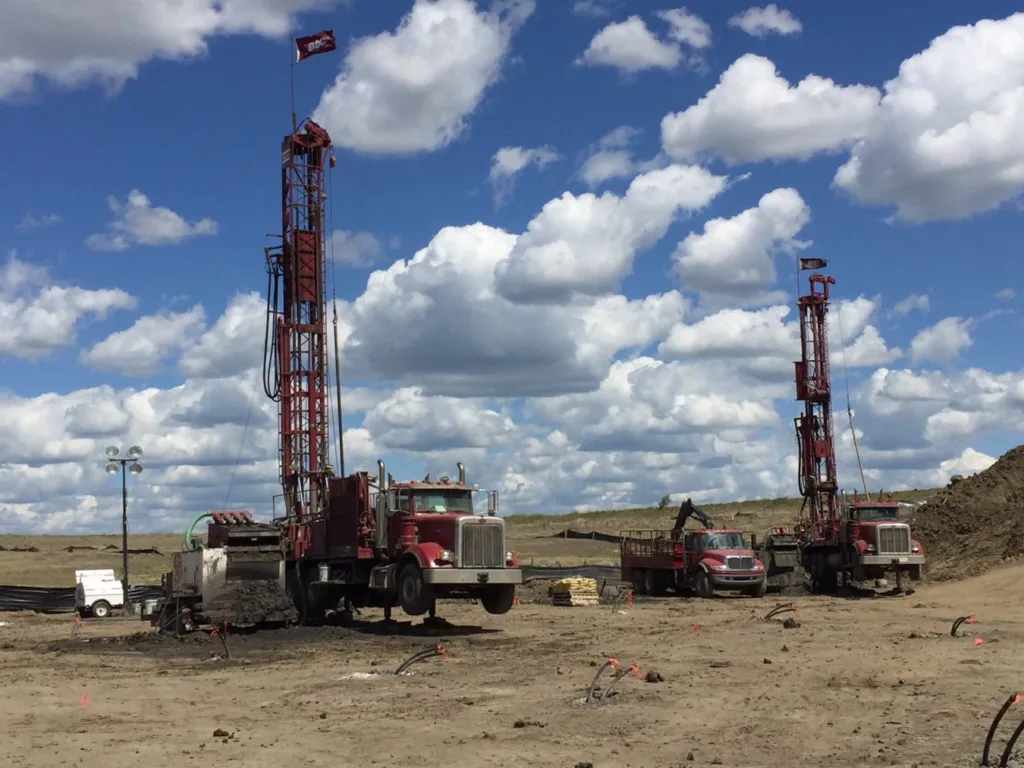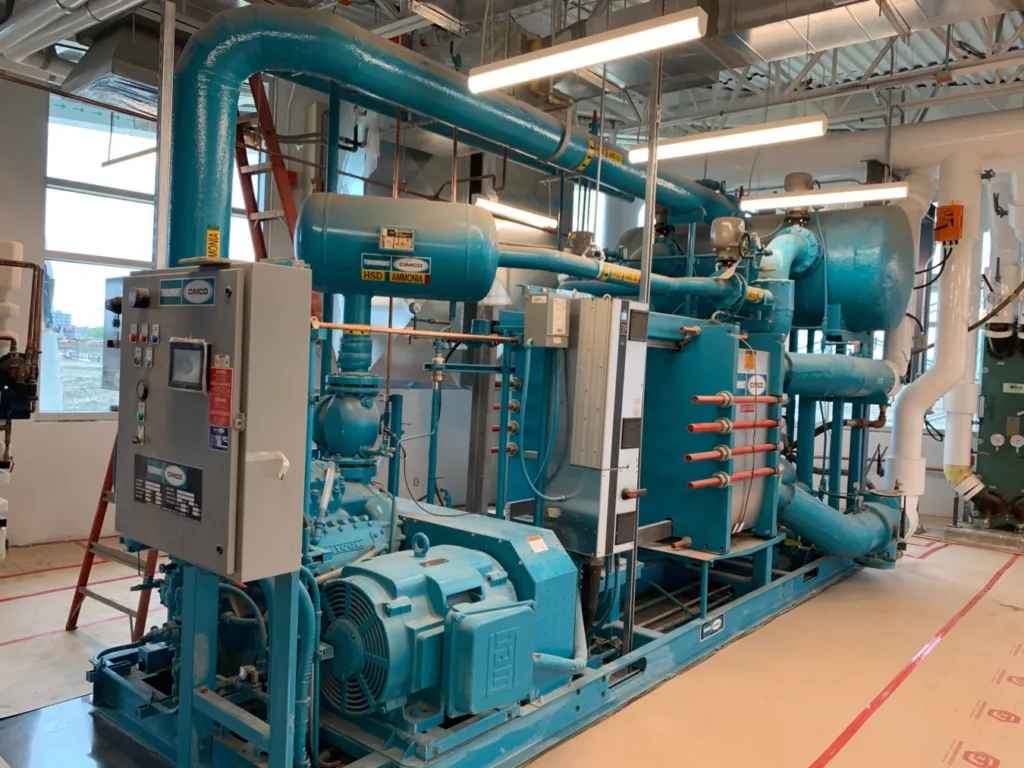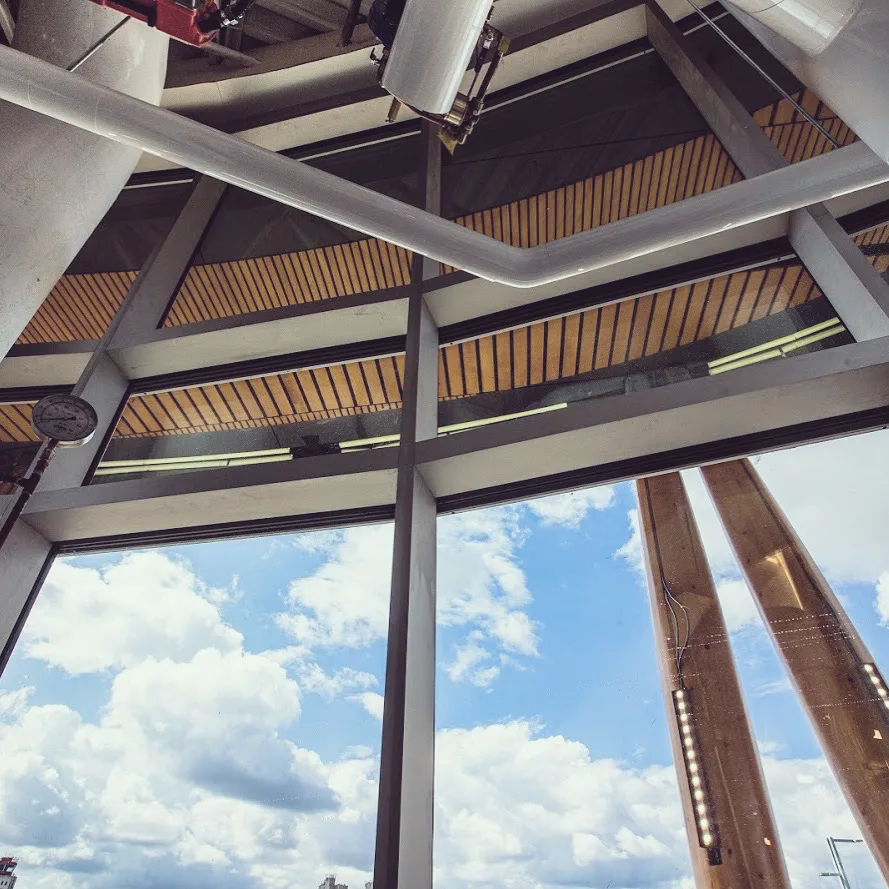Blatchford Renewable Energy is helping to reduce greenhouse gas emissions in the community by delivering shared, renewable energy to homes and businesses through a community-wide District Energy Sharing System.
Sounds great, right? But how exactly does a District Energy Sharing System work? In order to understand it, we have to look both up to the sky and down to the earth.
Let’s start where it all begins – the sun. About half the sun’s energy is absorbed into the earth’s surface as heat energy. This energy usually remains untapped.
To access this renewable energy, we’ve built a geoexchange field by drilling boreholes roughly 150 metres down into the earth. At this depth, the temperature is around 8 degrees Celsius, even during the coldest of Edmonton winter days.

This geoexchange field is like a massive ground energy battery that ‘charges’ the district energy sharing system.
In the winter months, the energy harnessed from the geoexchange field is sent to the community’s Energy Centre where it is upgraded to a higher temperature using a highly energy-efficient heat pump. This energy is then sent via a network of underground pipes to the homes and buildings in the community.

In the summer months, the excess heat energy from the system is sent down into the geoexchange field where it can be stored until it’s needed again in the winter.
The District Energy Sharing System also allows for energy to be ‘shared’ throughout the neighbourhood. Through the use of heat pumps, excess heat energy can be removed from one building and put back into the system to be used in another building.
During certain times of the year, the heating and cooling energy needs within the community will balance each other out, so no additional energy is required. Essentially, the entire community’s heating and cooling needs will be met by recycled, shared energy!
Watch the video below to learn more about how this renewable energy source is captured and then shared throughout the neighbourhood.
